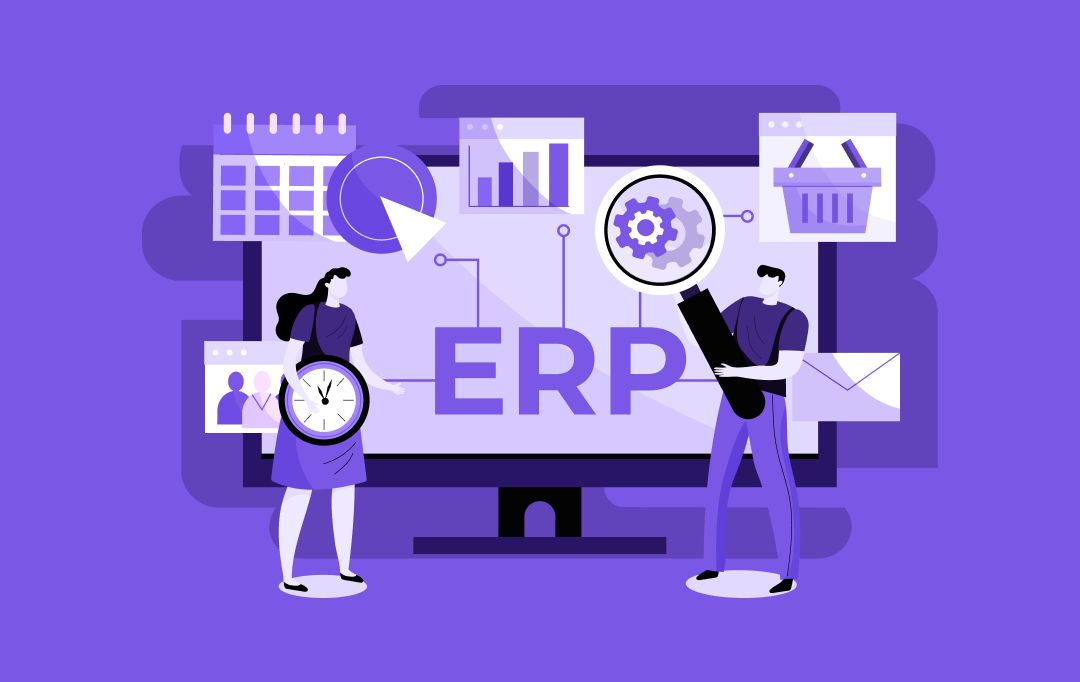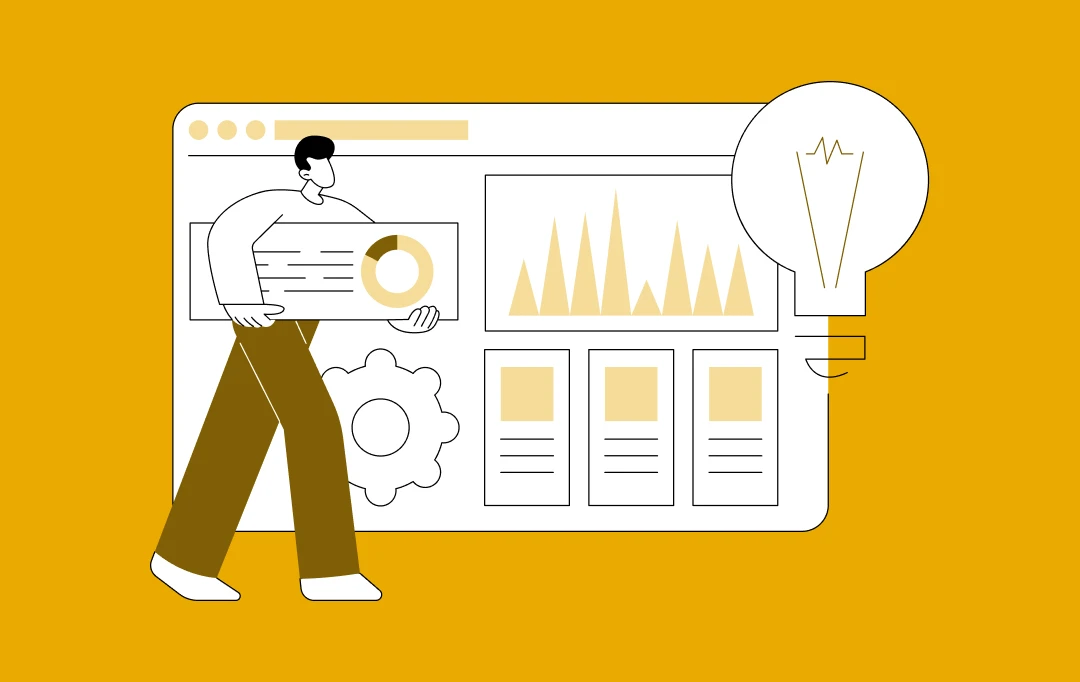- Why Industries Adopting Software Development in Australia
- Market Performance of Custom Software
- Technologies Commonly Used in Software Development
- A Comprehensive View of the Costs Involved in Developing Software
- Cost Based on Complexity:
- Costs Based on the Development Phase
- Hidden Costs in Software Development
- Ongoing Maintenance
- Infrastructure Costs
- Licensing and Compliance
- Advertising and Promotion
- Factors Influencing Software Development Costs
- Scope and Complexity
- Technology Stack
- Third-Party Integrations
- Security and Compliance
- Development Team Structure
- Hidden Expenses
- Features Influencing Costs of Software Development
- Essential Features:
- Advanced Features
- Unique Selling Points (USPs)
- Key Strategies to Optimize Software Development Costs
- Building an MVP
- Prioritize Features
- Use Existing Tools and Frameworks
- Outsourcing to Reliable Teams
- Cross-Platform Development
- Revenue Models for Software Development
- Subscription Models
- One-Time Licensing Fees
- Freemium Models with In-App Purchases
- Why Partner with a Professional Software Development Company
- FAQs:
Australia has quickly established itself as a frontrunner in technology and innovation, making it an ideal location for bespoke software development. Companies in various sectors progressively seek customized solutions to enhance efficiency and promote expansion.
Further analyzing the market’s potential is mostly because of the growing government and private sector involvement in various sectors, from banking and finance to healthcare and education. Along with commerce, logistics, and transportation, the services and utilities sectors are also expected to increase their economic participation.
Due to the high projected annual growth rate of 4.39% between 2029 and 2024, Australia is positioning itself as a hub for work, and the software development cost in Australia is very profitable. The market volume is expected to reach approximately 24.48 billion USD in a quarter of a decade.
This article explores the elements influencing the cost to develop a software in Australia, with details of the different phases of development. It provides practical methods to enhance budgets while ensuring high-quality standards.
Whether you’re a new startup or a well-established business, this guide offers essential insights to assist you in navigating the ever-changing ecosystem of custom software development Australia.
Why Industries Adopting Software Development in Australia
Australia has become an innovation hub for technology. Industries easily and quickly embrace software development as a source of competitiveness. From streamlining operations to enhancing customer experiences, businesses in different sectors utilize tailored software solutions to meet dynamic market demands.
It is changing the finance, healthcare, retail, and manufacturing industries by making them efficient in business, fostering innovation, and helping enterprises become future-ready in the largely digital world.
Market Performance of Custom Software
Custom software solutions are progressively being utilized across various industries because they can cater to particular business requirements. Here’s how multiple industries are leveraging tailored software to boost revenue:
- Medical Services: Hospitals utilize tailored software to manage patients, improve operational efficiency, and decrease wait times.
- Commerce: E-commerce sites utilize tailored software to offer individualized shopping experiences, greatly boosting sales.
- Production: Tools and technologies for supply chain management help enhance production timelines and inventory, reducing costs.
As the significance of software development for businesses increases swiftly, firms in these sectors are putting resources into customized solutions to achieve a competitive advantage.
Technologies Commonly Used in Software Development
The selection of technology significantly impacts software development cost in Australia . Based on the project needs, companies may choose between fundamental or sophisticated software development Australia types, such as:
Fundamental Programming Instruments:
Technologies such as Java, Python, and PHP are commonly used to create essential functionalities. These tools are economical and can be used for fundamental purposes such as inventory or customer relationship management (CRM).
Cutting-Edge Technologies:
- Artificial Intelligence (AI): The long-lasting impact of AI in Australia has created opportunities and solved various industry challenges. Aids in creating smart systems such as chatbots or predictive analytics applications but raises the total cost to develop a software in Australia.
- Internet of Things (IoT): Employed in intelligent devices and automation, necessitating intricate integrations and hardware compatibility.
- Blockchain: This technology is perfect for secure transaction systems or supply chain monitoring but entails increased development and testing expenses.
These technologies contribute distinct advantages and influence the cost of developing software in Brisbane, Australia. Selecting the appropriate technology stack according to business requirements and budget is essential for optimizing ROI.
By matching technology choices with particular business objectives, organizations can guarantee they receive the advantages of custom software development Australia while ensuring cost-effectiveness.
A Comprehensive View of the Costs Involved in Developing Software
Creating software is a complex process, and its expenses are influenced by numerous factors such as difficulty, phases of development, and geographic disparities.
In Australia, software costs can range from AUD 40,000 to over AUD 450,000, depending on the project’s size, scope, and intricacy.
For companies considering software development Australia, grasping these cost elements promotes improved budget planning and aligns expectations with outcomes.
- Cost Based on Complexity
- Cost Based on Development Phase
Cost Based on Complexity:
Basic Software
- Estimated Cost: AUD 10,000–60,000.
- Example: Stock control systems and fundamental customer relationship management tools.
- Characteristics: Restricted capabilities, straightforward interfaces, and few integrations.
Medium-Complexity Software
- Estimated Cost: AUD 60,000–90,000.
- Example: Online shopping sites and exercise applications featuring dashboards.
- Characteristics: Incorporation of external APIs, average user engagements, and cloud assistance.
Complex/Enterprise-Level Software
- Estimated Cost: AUD 90,000–250000
- Instances: Tailored ERP software creation in Australia and monetary platforms.
- Characteristics: Sophisticated capabilities such as AI, IoT, blockchain, numerous integrations, and high-level enterprise security.
The software development cost in Australia rises considerably due to the demand for advanced technology and scalable architecture.
Costs Based on the Development Phase
Each phase of the software development lifecycle contributes to the overall cost. For companies wondering about the steps to develop custom software in Australia, these stages provide a clear framework for estimating expenses:
Planning
- Estimated Cost: AUD 5,000–20,000.
- Involves: Investigation, concept development, and model creation to verify the project’s viability.
Design
- Cost Projection: AUD 10,000–50,000.
- Basic Interfaces: Reduced expense.
- Intricate UI/UX: Entails comprehensive mockups and user experience mapping.
Development
- Cost Projection: AUD 50,000–300,000.
- Frontend Development: For components that users interact with.
- Backend Development: Concerning databases, servers, and APIs.
- Integration Expenses: Incorporating external tools such as payment processors or social platforms.
Testing
- Estimated Cost: AUD 5,000–30,000.
- Manual Testing: Requires more effort and takes more time.
- Automated Testing: Upfront expenses are required, but quicker performance for extensive projects.
Deployment and Maintenance
- Cost Projection: AUD 10,000–100,000 (per year).
- Features: Cloud hosting, routine updates, bug resolutions, and scalability improvements.
Understanding these expenses will help with transparency when calculating the price of developing software. Businesses may consider outsourcing to bespoke software development Australia providers for tailored solutions at competitive rates.
Here is the table showcasing cost ranges at each stage:
| Stage | Cost Range (AUD) | Key Considerations |
|---|---|---|
| Planning | 5,000–20,000 | Research and feasibility analysis. |
| Design | 10,000–50,000 | UI/UX complexity impacts costs. |
| Development | 50,000–300,000 | Includes coding and integrations. |
| Testing | 5,000–30,000 | Manual vs. automated testing costs. |
| Deployment & Maintenance | 10,000–100,000 (annual) | Cloud hosting, updates, and scalability. |
By analyzing these elements, companies can more accurately assess the software development expenses in Australia and ensure they align with their objectives and financial plans.
Hidden Costs in Software Development
Alongside the initial development expenses, various concealed costs can greatly influence the total software development cost in Australia. These continual expenses need to be considered when organizing a software project.
Ongoing Maintenance
When the software is operational, consistent updates, error corrections, and performance enhancements are required. Maintenance guarantees that the software remains secure, operational, and up-to-date, yet it demands ongoing allocation of time and resources.
Also Read: How Much Does it Cost to Maintain a Software?
Infrastructure Costs
Software applications frequently depend on servers, cloud storage, and networking systems. These expenses may fluctuate depending on the software’s size and application. As user demand rises, infrastructure expenses might rise to support greater traffic and data processing requirements.
Licensing and Compliance
Depending on the software sector, there could be legal obligations for licenses and adherence to standards like data protection or industry regulations. Fulfilling these requirements may incur software licenses, certifications, and evaluation costs.
Advertising and Promotion
Introducing and marketing a new software product is crucial for its success. This could cover costs such as digital marketing initiatives, public relations activities, and user acquisition plans, all contributing to the total expense of achieving market success for the software.
Understanding these hidden costs is essential, as they impact the long-term expense of developing software in Australia.
Factors Influencing Software Development Costs
In Australia software development costs fluctuate significantly, influenced by a mix of technical, strategic, and market elements. Comprehending these factors is essential for companies looking to utilize resources efficiently and strategize their finances.

Scope and Complexity
The extent and intricacy of a project significantly influence the expenses associated with software development Australia. Here’s how:
Number of Features: Additional features extend the time and effort required for development. For instance, a basic task management application is cheaper than a custom ERP software development in Australia because of its extensive features.
Feature Depth: Enhanced features like real-time analytics, AI-based insights, and IoT connectivity increase expenses.
Scalability Requirements: Software created for scalability at the enterprise level leads to increased expenses in both development and upkeep.
Technology Stack
The selection of technologies greatly influences the cost of software development in Australia.
Basic Tech Stack: Common programming languages like Python, JavaScript, and foundational frameworks entail moderate expenses.
Advanced Technologies: Including AI, blockchain, or machine learning incurs an additional cost because they require specialized knowledge.
Infrastructure Requirements: Cloud-based solutions, prevalent in custom software development Australia, frequently demand extra investment for initialization and continuous operational expenses.
Third-Party Integrations
Contemporary software frequently depends on outside integrations to boost functionality.
APIs: Incorporating APIs for mapping, weather information, or payment processing involves costs for licensing and development.
Payment Processors: Secure payment systems like PayPal or Stripe require initial integration expenses and transaction charges.
CRM Systems: Tailored integrations with platforms such as Salesforce may also raise expenses.
Integration of Social Media: Incorporating functions such as logging in through Facebook or sharing posts on Instagram necessitates extra coding and testing.
Security and Compliance
As the emphasis on data protection grows, security measures greatly affect expenses.
Regulations: Applications created for sectors such as healthcare or finance must adhere to regulations like GDPR, HIPAA, or PCI DSS, requiring strong security structures.
Encryption and Data Protection: Guaranteeing safe data storage and transmission increases the cost of software development in Australia.
Development Team Structure
The kind of team selected for the project has a major impact on cost differences:
Freelancers: Typically less expensive but might not offer complete assistance.
In-House Teams: Provides enhanced control but comes with substantial salary and infrastructure expenses.
Outsourced Agencies: Involving experts from Australian custom software development companies guarantees proficiency and growth, typically at competitive prices.
Hidden Expenses
Certain expenses stay concealed in initial estimates but are unavoidable:
Infrastructure: Hosting, servers, and cloud storage contribute to ongoing operational expenses.
Licensing: Numerous third-party tools and frameworks necessitate purchased licenses.
Marketing: Promotions after launch to guarantee the software connects with its intended audience.
Training: Train end-users and staff on tailored solutions like custom ERP software development in Australia.
By meticulously examining these elements, companies can more accurately assess the expenses involved in the cost to make a software in Sydney Australia, or comprehend the duration required for software development.
All these elements highlight the importance of software development in business and stress the necessity of comprehensive planning to manage expenses efficiently.
Features Influencing Costs of Software Development
The characteristics included in a software project greatly influence the software development expenses in Australia, as they outline the product’s complexity and extent.
- Essential Features
- Advanced Features
- Unique Selling Points (USPs)
Essential Features:
Essential features form the core of any software, emphasizing user-friendliness and functionality.
Examples: User authentication systems, user-friendly interfaces, and safe data storage.
Cost Estimates: The cost of creating key features can vary from AUD 15,000 to AUD 30,000, depending on the interface’s simplicity and the database structure.
These attributes guarantee that the software addresses fundamental user requirements and is a dependable foundation for upcoming improvements.
Advanced Features
For companies looking to differentiate themselves, high-end features are crucial.
Examples: Live updates for dynamic data exchange, AI-based analysis to forecast user actions, or chatbots for automated customer assistance.
Cost Estimates: Incorporating these may raise expenses by AUD 20,000 to AUD 50,000, depending on the technology stack and the complexity of the integrations.
These attributes improve user experience and involvement, fostering sustained value.
Unique Selling Points (USPs)
Unique, tailored features provide a competitive advantage but at a higher cost.
Examples: Tools tailored for specific industries, such as telemedicine platforms or gamified user engagement systems.
Cost Estimates: Creating USPs usually costs between AUD 30,000 and AUD 100,000, indicating their complexity and originality.
Focusing on the appropriate features allows companies to maximize their software development cost in Australia, aligning budget limitations with performance and market influence.
Key Strategies to Optimize Software Development Costs
Enhancing software development cost in Australia is essential for companies aiming to create quality products while staying within budget. Here are critical tactics to attain cost-effectiveness:

Building an MVP
Creating a Minimum Viable Product (MVP) enables companies to concentrate on essential features, decreasing initial development time and expenses. An MVP allows testing the software’s idea before significantly investing in more complex features.
Prioritize Features
By focusing on key functionalities, companies can reduce their development expenses. Rather than constructing everything simultaneously, it’s important to determine which features have the greatest impact and prioritize their development. This strategy guarantees the project remains within budget while continuing to provide value to users.
Use Existing Tools and Frameworks
Utilizing current tools, libraries, and frameworks can greatly reduce development time and lower expenses. Numerous ready-made solutions exist for standard functionalities like authentication, payment processing, or notifications, which can be incorporated rather than developed from the ground up.
Outsourcing to Reliable Teams
Delegating software development to a talented team like Appinventiv Australia is an effective approach to optimize the expenses. It is crucial to select trustworthy partners who provide quality services at competitive rates.
Cross-Platform Development
Cross-platform development tools enable companies to reach various platforms (iOS, Android, web) using one codebase, reducing development and maintenance expenses. This approach simplifies scaling and updating the software on multiple platforms.
Revenue Models for Software Development
Selecting a successful revenue model guarantees that custom software development in Australia recovers expenses and produces steady profits. Here’s a summary of typical models that companies utilize to generate revenue from their software projects:

Subscription Models
The subscription model is perfect for SaaS (Software as a Service) platforms. Clients are charged subscription fees, either monthly or yearly, for using the software. This model offers companies a consistent source of income and guarantees reliable cash flow. Subscriptions frequently feature tiered pricing that provides different access levels depending on customer requirements.
For instance, Canva basic plans might include essential features, whereas premium plans provide advanced tools or integrations. This model is ideal for companies heavily investing in cloud services, frequent updates, and assistance.
Also Read: How to Build a SaaS Platform Like Canva?
One-Time Licensing Fees
This conventional revenue model requires a one-time, upfront payment that provides users with indefinite software access. It’s frequently utilized for business solutions, desktop software, or specialized tools. Though this method generates instant revenue, the lack of ongoing income requires businesses to attract new customers consistently. Consistent updates and enhancements are essential for ensuring ongoing satisfaction and remaining competitive.
Freemium Models with In-App Purchases
The freemium model offers a free edition of the software with restricted features, encouraging users to discover its capabilities. In-app purchases or upgrades provide access to enhanced features, exclusive tools, or experiences without advertisements.
This model is especially favored in mobile apps and gaming software, where a large user base generates income. Freemium approaches are effective for companies aiming to boost user adoption before generating revenue.
Choosing the appropriate revenue model enables companies to match their pricing strategies with market needs, ensuring they cover the cost to develop a software in Australia while enhancing profitability in the long run. Every model possesses unique advantages and should be selected according to the software’s objective, target audience, and current market trends.
Why Partner with a Professional Software Development Company
Assessing the cost of software development in Australia requires thoroughly examining elements such as complexity, necessary features, and continual maintenance. Although these expenses can accumulate, collaborating with a professional software development company guarantees that your investment achieves optimal value.
Appinventiv is recognized as a professional custom software development company in Australia. It focuses on innovation, scalability, and efficiency, and these companies assist businesses in reaching their specific objectives while reducing unnecessary costs.
Are you prepared to transform your idea into an impactful digital solution? Contact us for a smooth development journey that boosts growth and optimizes ROI!
FAQs:
Q. What’s the Average Cost of Software Development in Australia?
A. The software development cost in Australia significantly differs depending on the intricacy, functionalities, and development team involved. Typically, expenses vary from AUD 50,000 for simple software to several hundred thousand for intricate, enterprise-grade solutions. Elements like the technology stack, team skills, and geographic position in Australia significantly influence cost determination.
Q. Is the cost of software development different across industries?
A. Indeed, the software cost can vary between industries because of different needs and standards. For example, software in healthcare and finance typically faces increased expenses because of the necessity for strong security and compliance protocols such as HIPAA or GDPR. Conversely, e-commerce platforms might prioritize scalability and ease of use, influencing their cost framework.
Q. How to Choose the Right Software Development Team?
A. To select the appropriate team of custom software development company in Brisbane, focus on expertise, communication skills, and the quality of their portfolio. Seek developers with expertise in your sector and review client feedback for dependability. Assess their technology framework and confirm that they provide support after development. Consider whether a local group, such as one focused on bespoke software development Australia, matches your project objectives.
Q. How Long Does it Take to Build Software In Brisbane, Australia?
A. The time taken for custom software development in Australia varies based on the project’s complexity and scale. Simple software might require 2-4 months, whereas medium—to high-complexity projects could take anywhere from 6 months to more than a year. Team size, agile practices, and iterative feedback loops impact the total duration.



Custom Development or White Label Solutions: Which is Right for Your Business?
Key takeaways: 77% of companies are prioritizing digital transformation; the right tech approach is crucial for staying competitive. Custom development offers tailored solutions for unique needs, flexibility, and long-term scalability. Whereas, white-label solutions provide quick market entry, cost-efficiency, and easy customization for standard needs. Appinventiv’s expertise helps you navigate custom development vs white-label to choose…

ERP Integration in Australia - Why It Is Essential and How to Do It Right
Key takeaways: ERP integration enables operational efficiency, reduced costs, and enhanced decision-making. Healthcare, finance, manufacturing, retail, and all the other sectors are benefiting from ERP integrations in Australia. While ERP integration can be costly, ranging from AUD 45,000 - AUD 450,000, it leads to significant long-term savings and scalability. Compliance with Australian regulations is critical,…

Predictive Analytics Software Development - Features, Benefits, Use Cases, Process, and Cost
Key Takeaways Predictive analytics helps businesses shift from “what has happened” to "what will happen," enabling proactive strategies rather than reactive ones. Real-time analytics and AI integration are driving the growth of predictive analytics, making it more accurate, accessible, and critical for business success. Custom predictive analytics solutions can enhance customer satisfaction, reduce costs, and…


















